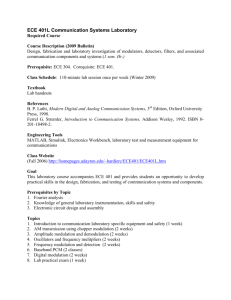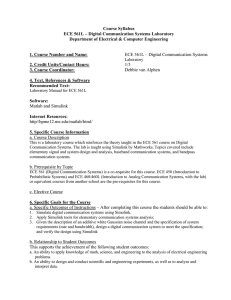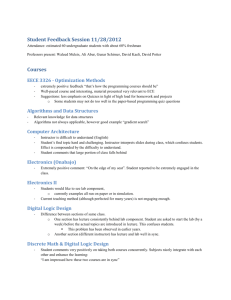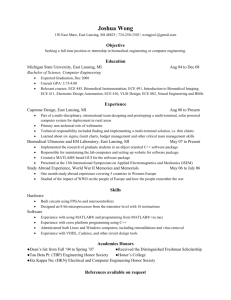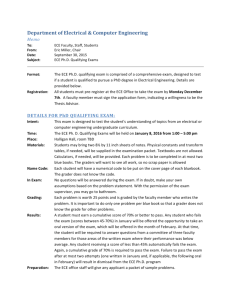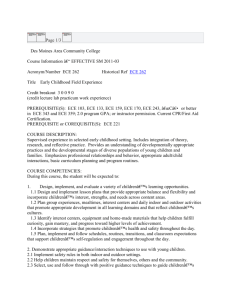ECE 561 ()
advertisement
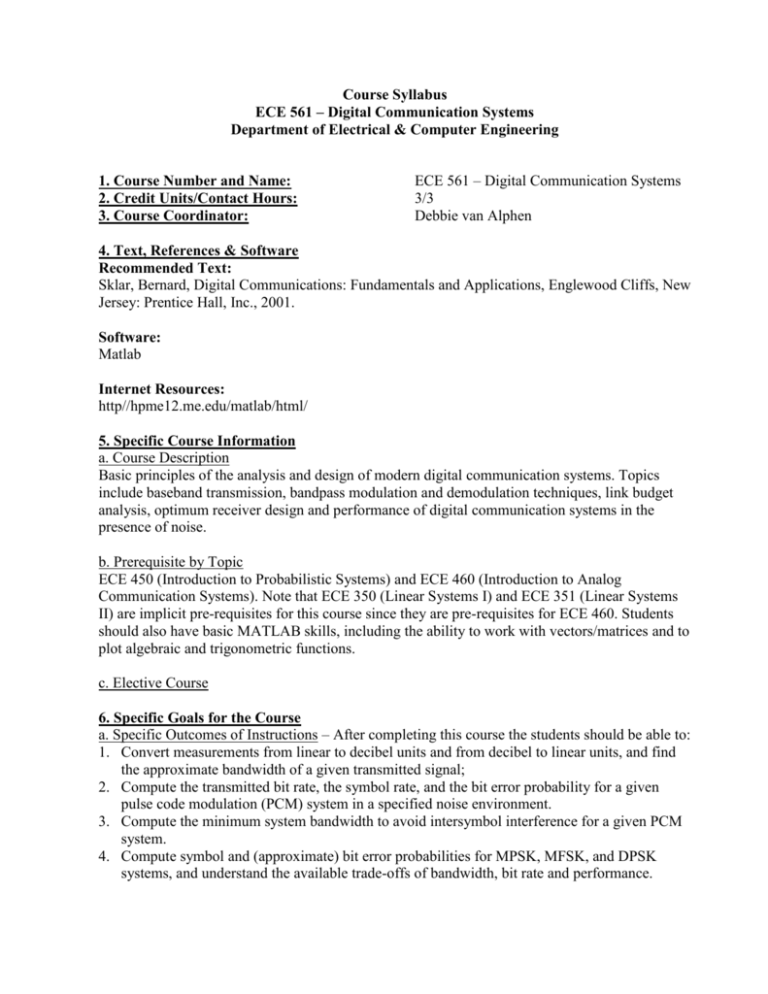
Course Syllabus ECE 561 – Digital Communication Systems Department of Electrical & Computer Engineering 1. Course Number and Name: 2. Credit Units/Contact Hours: 3. Course Coordinator: ECE 561 – Digital Communication Systems 3/3 Debbie van Alphen 4. Text, References & Software Recommended Text: Sklar, Bernard, Digital Communications: Fundamentals and Applications, Englewood Cliffs, New Jersey: Prentice Hall, Inc., 2001. Software: Matlab Internet Resources: http//hpme12.me.edu/matlab/html/ 5. Specific Course Information a. Course Description Basic principles of the analysis and design of modern digital communication systems. Topics include baseband transmission, bandpass modulation and demodulation techniques, link budget analysis, optimum receiver design and performance of digital communication systems in the presence of noise. b. Prerequisite by Topic ECE 450 (Introduction to Probabilistic Systems) and ECE 460 (Introduction to Analog Communication Systems). Note that ECE 350 (Linear Systems I) and ECE 351 (Linear Systems II) are implicit pre-requisites for this course since they are pre-requisites for ECE 460. Students should also have basic MATLAB skills, including the ability to work with vectors/matrices and to plot algebraic and trigonometric functions. c. Elective Course 6. Specific Goals for the Course a. Specific Outcomes of Instructions – After completing this course the students should be able to: 1. Convert measurements from linear to decibel units and from decibel to linear units, and find the approximate bandwidth of a given transmitted signal; 2. Compute the transmitted bit rate, the symbol rate, and the bit error probability for a given pulse code modulation (PCM) system in a specified noise environment. 3. Compute the minimum system bandwidth to avoid intersymbol interference for a given PCM system. 4. Compute symbol and (approximate) bit error probabilities for MPSK, MFSK, and DPSK systems, and understand the available trade-offs of bandwidth, bit rate and performance. 5. Design a coded communication system given system specifications such as available bandwidth, required data transmission rate, and required bit error probability. b. Relationship to Student Outcomes This supports the achievement of the following student outcomes: a. An ability to apply knowledge of math, science, and engineering to the analysis of electrical/computer engineering problems. b. An ability to design and conduct scientific and engineering experiments, as well as to analyze and interpret data. c. An ability to design systems which include hardware and/or software components within realistic constraints such as cost, manufacturability, safety and environmental concerns. e. An ability to identify, formulate, and solve electrical/computer engineering problems. k. An ability to use modern engineering techniques for analysis and design. l. Knowledge of probability and statistics. m. An ability to analyze and design complex devices and/or systems containing hardware and/or software components. n. Knowledge of math including differential equations, linear algebra, complex variables and discrete math. 7. Topics Covered/Course Outline 1. Signals and Systems Review 2. Formatting and Baseband Transmission 3. Bandpass Modulation and Demodulation 4. Channel Coding: Linear Block Codes 5. Channel Coding: Convolutional Codes 6. Channel Capacity and System Trade-Offs 7. Quizzes and Homework Reviews Prepared by: Sharlene Katz, D. van Alphen, Professor of Electrical and Computer Engineering, October 2011 Ali Amini, Professor of Electrical and Computer Engineering, March 2013
